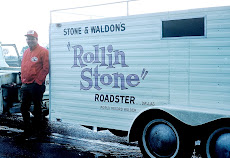My grandchildren are still amazed when I tell them stories of World War 2... My father and 6 uncles were all called to the service in the early 1940's,...and all returned home after the war. They told me only divine intervention allowed us to win the war. The enemy had better planes, tanks, and at the time, soldiers! They had four years to build concrete fortifications from Norway all the way to Spain, and it took Allied soldiers less than 6 hours to compromise 'the Atlantic Wall.'
Still, I have always been impressed with the planes and tanks of Germany at that time. General Heinz Guderian was the father of the 'Blitzkrieg' type war and most of the tanks were designed under his guidance.
(A) The Mark II was a stop-gap measure until better tanks could be built, but still it served from 1935 to 1942. This tank was loaned to Spain to turn back a
civil war in the mid 30's and when pulled from service in 1942 the chassis was used for mobile artillery. The Mark II had a 55-millimeter cannon and one MG34 machine gun. A crew of three manned the Mark II, and it was the first to be equipped with a radio for tank-to-tank communications. The gasoline powered six-cylinder Maybach engine had a top speed of 40kph.
(B) The Mark III was one of Guderian's ideas to spearhead his armored attacks. There were two variations of the Mark III, one equipped with an anti-tank cannon, and the second was a support tank with a larger cannon. These became Mark III and Mark IV models. They weighed about 15 tons and were powered by V-12 Mercedes engines. In 1937 fifteen of the Mark III's were delivered to the Army just in time to take part in the takeover of the Sudetenland and the invasion of Poland. In 1940 the two models were updated with a 300hp engine and a 10-speed gearbox. They weighed 20 tons and featured a torsion bar suspension, a featured carried over to the Panther and Tiger model tanks that followed. By 1943 both models were pulled from service and their chassis became the platform for the Sturmgeschutz (mobile artillery).
(C) The Panther entered service in 1943 when the Russian T-34 overwhelmed the Mark III and Mark IV tanks. The Panther had the same 700hp Mercedes V-12 engine as the Tiger but its lighter weight made it faster. The 44 ton Panther could reach speeds of 35 mph. The 5-man crew had a 70-mm high velocity cannon and two MG34 machine guns. The front armor of the Panther was 80 millimeters thick but the side armor proved to be its downfall. Over 6,000 Panthers were delivered to the Wehrmacht, making it Germany's most prolific tank in World War II.
(D) The 62 ton Tiger was the most feared monster of World War II. Entering service in 1942 it was plagued with mechanical problems from the start. The Tiger featured armor 5 inches thick in front and 3 inches thick on the sides. German engineers took the 88-millimeter anti-aircraft gun and fitted it to the Tiger. It could fire a 100 pound shell over two miles with deadly accuracy. The Tiger also had two MG34 machine guns for the 5-man crew. The Tiger was used in both the Russian and North African campaigns. Just over 1,340 Tigers were built, but by the time they entered the war they had to be used in a defensive effort.
(E) The Sturmgeshutz (assault gun) is actually NOT a tank but a mobile artillery piece. It does not have a turret. The 'Stug' was built in high volume and also used at the forefront of any action. When the Mark III and Mark IV tanks became obsolete, their chassis was used as a platform for the Stug. They carried a 75-millimeter main gun plus one MG34 machine gun. The turret was expensive and four Stugs could be built for the same price as one Tiger tank. Built by Daimler-Benz, it entered service in 1940 and participated in every campaign thereafter. In 1944 Krupp Industries proposed a Stug with the 88mm gun, but it was never put into production. Over 10,000 of the Stugs were built. The model is painted in white, as it would have looked in the Battle of the Bulge, which was fought in a snowstorm.
(F) The Hanomag- Built by the Hannoversche Maschinebauag Company, which made trains, tractors, and military vehicles dating back to the 1830's. In 1937 the Hanomag 4-wheel drive personnel carrier entered service. It could carry 13 soldiers into battle with its crew of two. The company could not keep up with the demand and in 1941 BMW also began producing the Hanomag. Over 15,000 were built during the war. The only Allied comparison was the American GMC half-track, and despite being a little slower, the Hanomag offered its troops better protection with thicker sloped armor on the sides.
Tuesday, May 1, 2012
Subscribe to:
Post Comments (Atom)









No comments:
Post a Comment